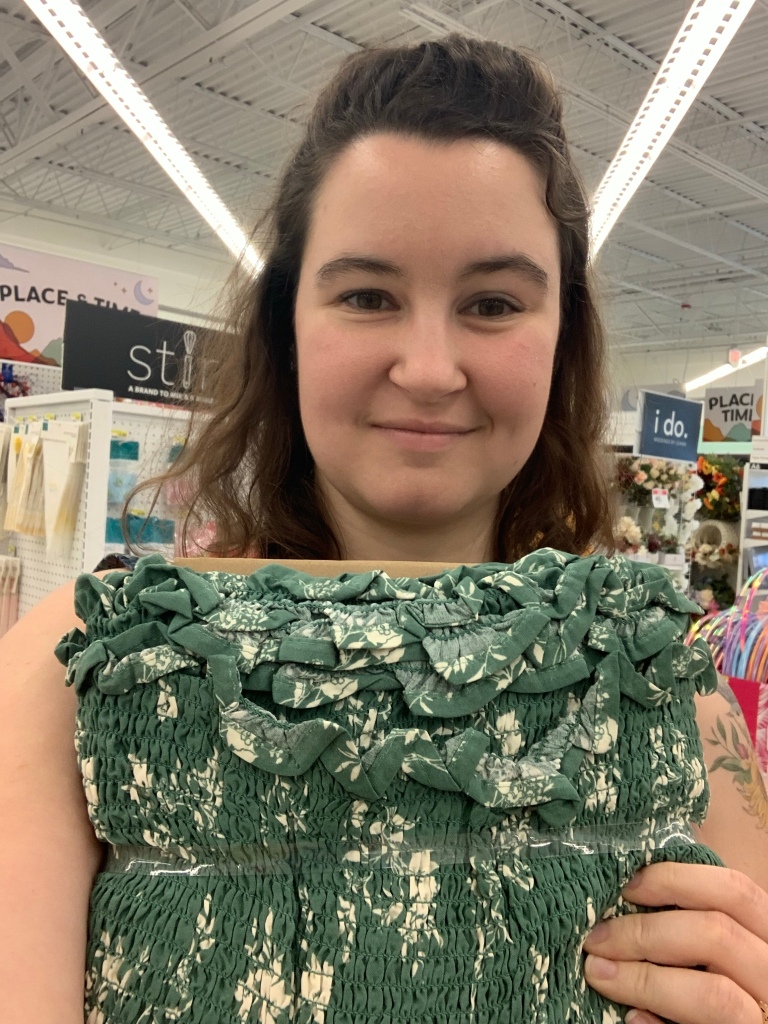I thought my quiver of crafting skills was full when my friend Anne invited me to her weaving guild meeting for a demonstration on bobbin lace last September. Sure, I was interested. I wanted to know just the littlest bit about how bobbin lace was made, but I had no need to learn how to make this lace myself. So I attended the meeting, full of confidence that I had learned all the crafts I needed. Silly me.
At the end of the demonstration the kind lace ladies invited anyone who was interested to come up and try making the most basic stitches. I, of course, was interested, and as soon as I started working the stitches I was hooked. I didn’t realize this at the time: I still suffered under the illusion that this was just a thing I was trying for 5 minutes. But then everyone started packing up to go home and the kind lace lady offered to let me take the bobbins and lace pillow home so I could keep working on my sampler. I borrowed a book from my friend, and by the end of the day I had made my first finished piece of bobbin lace!


Then, because I had the materials and tools on-hand and wanted to use them while I was borrowing them, I started another bookmark.



And then I found my own book on beginner lace-making, locally, and for very little money! So I started the next lesson.



I worked on my lace outside as much as possible. The rhythmic clinking of the bobbins was soothing and the sunshine made me happy.



I very quickly needed more bobbins, so I bought a pack. But I decided they were too plain, so I decorated them. I was pleased to find that I had a garden of flowers to enjoy all year long – especially since we were headed into Winter.


By this time I was well and truly hooked. I started going to lace guild meetings each month and I started to get even more interested in bigger projects and more difficult kinds of lace.



October brought my birthday: I started my first big project and bought myself some art-lace books.





And then my progress slowed down to what seemed like a glacial pace. A handkerchief border is not a small project, and since I only had one pillow for lacemaking and one set of bobbins, I couldn’t start or work on anything else. I worked on this one lace project for over 4 months.




I finished the lace in February and sewed in the center handkerchief square in March. I can’t tell you how proud I am of this project!



With my handkerchief finished, I finally painted my remaining bobbins. My garden is now complete!



My next project took me away from my lesson book: I made a dragon! The pattern was designed by Galicia Bee on Etsy, and can be found here. I had a lot of fun making this whimsical pattern. I am realizing through this lace journey just how much joy colour brings me.


At this point I really wanted to venture into other kinds of lace, but I decided to be mature and finish my lessons first (after all, the few remaining techniques are things I need to know before diving into harder laces). My next project taught me how to make square tallies.


You’ll notice my lace pillow has changed! A very kind friend from the lace guild gave me this beautiful pillow stuffed with sea grass!! I was thrilled! So I gave back the borrowed pillow and bobbins and I am finally making lace all with items I own. That may seem silly or small, but it’s a big deal to me. I also made a small family of wooden bead dolls to keep me company while I work on my lace.
Instead of immediately diving into the next lesson, which was leaf-shaped tallies, I skipped ahead to plaits and picots. This lesson went extremely quickly!

And now I have begun my final lesson: leaf tallies. I couldn’t bear to work another project all in white, so I wound up my bobbins in colour and I am off to the races!

I will not say my lace education is complete because I still have so much to learn. But I will say that now that I have the basics down the whole world of bobbin lace is my oyster!




























































































































